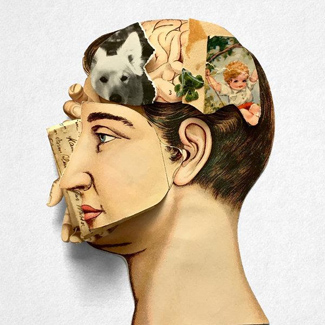 That’s over. This season the Cubs have joined more than a dozen other Major League teams in eliminating paper tickets in favor of digital versions, downloaded to apps and displayed on phones. That’s over. This season the Cubs have joined more than a dozen other Major League teams in eliminating paper tickets in favor of digital versions, downloaded to apps and displayed on phones.
And so ticket stubs join theater playbills, picture postcards, handwritten letters and framed photos as fading forms of preserving our memories. It raises the question, Is our view of the past, of our own personal history, somehow different without hard copies?
When my mother died a few years ago, we sifted through albums and shoe boxes in which she had lovingly archived her children’s lives. Handwritten report cards from grade school. News clippings of Little League games. Postcards from summer camp. And so many photos: birthdays, graduations, weddings, trips to wonderful places.
Mom was not a hoarder. She was typical of a generation that found it pleasing to keep memories alive by retaining hard copies. Not that she had much choice: She never owned a computer or cellphone.
After my father’s death, in 1999, I saved a folder of handwritten condolence letters from his friends and colleagues. Rereading them once or twice a year, I am transported back to times I miss so much. Of course, I received many emails about Dad as well — but I wouldn’t begin to know how or where to find them. Besides, personal messages are so much more meaningful when presented in the hand of the sender.
My two kids, now in their 20s, have mostly digital keepsakes. Increasingly they rely on Facebook and the cloud to store memories. Their letters from college, sent by email, are long gone. Many photos, never printed, have disappeared. I worry that for them, personal history already doesn’t reach back as far as it should.
Researchers know that of the two primary forms of accessing memory, recognition and recall, the former is a simpler and more reliable process. It is the association of a physical object with something previously encountered or experienced. This could be because tangible memories utilize all five senses, evoking emotional triggers and transporting us back to a precise time, place or moment.
In his new book, "Digital Memory Studies," Andrew Hoskins, a professor of social science at the University of Glasgow, concludes: "Despite the decay and wear and tear of photographs, letters and other objects that are reminders of people and past experiences, their keeping is like holding on to those people and experiences." Digital items offer nothing of the kind.
In my youth I collected things. I kept baseball cards in cigar boxes. I carefully slipped pennies into slots in cardboard sleeves and pasted stamps into an album. As my interest in journalism grew, I maintained a thick scrapbook of newspaper front pages. And yes, I still have a cherished batch of Broadway playbills and ticket stubs from games at Yankee Stadium.
This kind of collecting — not just accumulating but, to use a trendy term in its analog sense, curating — is likewise different when it involves the physical.
Mark B. McKinley, a psychologist who teaches at Lorain Community College in Ohio, explained in The National Psychologist that collecting physical memorabilia is a form of "experimenting with arranging and classifying" elements of our world. This, he says, "can serve as a means of control to elicit a comfort zone in one’s life, e.g., calming fears, erasing insecurity." It’s no wonder children are fond of collecting things — it’s critical to their mental and emotional development.
I looked at several parenting websites to see what children collect nowadays. One mother’s note from Kentucky caught my eye: "My son collects Lego sets, Bionicles, Mario figurines and lumps of broken concrete."
It would be easy to knock the concrete collection, but I actually find it kind of cool. The kid might become a great geologist or a successful contractor.
But will his mom print out a photo of that unique collection? Will his degree in geology be memorialized on paper, or will he be given a digital diploma? Will he frame his first contractor’s paycheck or will he be paid by direct deposit? And if he ever makes it to Wrigley Field, will he find a way to remember the ballgame without a ticket stub?
(c) Peter Funt. This column originally appeared in The New York Times.
|



 That’s over. This season the Cubs have joined more than a dozen other Major League teams in eliminating paper tickets in favor of digital versions, downloaded to apps and displayed on phones.
That’s over. This season the Cubs have joined more than a dozen other Major League teams in eliminating paper tickets in favor of digital versions, downloaded to apps and displayed on phones.